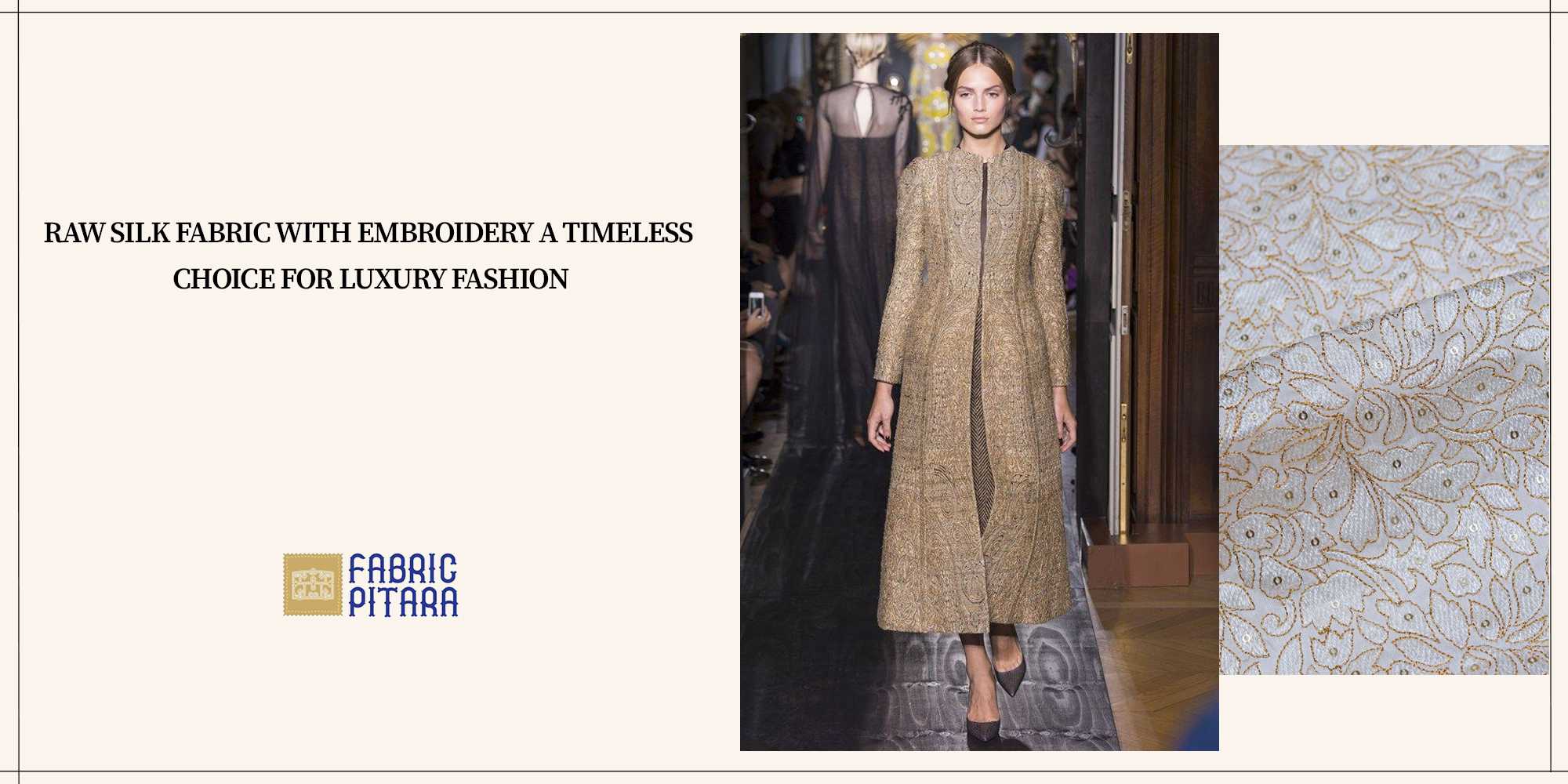![[Monochrome fabric featuring bold, geometric square patterns on a white background, perfect for contemporary designs and furnishings.]-[fabricpitara]](https://fabricpitara.com/media/magefan_blog/fc-93755-kk-1_1_12.jpg)
Khadi, frequently called the "material of freedom," is a textile that represents India's wealthy history, subculture, and independence movement similarly to being an image of the USA. In addition to its historic significance, this handspun and woven material is valued by many for its exclusive features, which make it a fave among eco-aware and style-ahead clients.
The Origins of Khadi
The history of Khadi starts in historical India, while weaving and spinning were conventional family crafts. But throughout the Indian independence movement, it was Mahatma Gandhi who delivered Khadi back to lifestyles and made it more widely known. Gandhi encouraged people to spin and weave their own cloth and advocated Khadi as a sign of independence and a means of opposing imported products. This movement established the groundwork for a fabric that is still treasured today in addition to being essential in India's freedom struggle.
![["Monochrome geometric fabric with bold, black and white diamond-shaped patterns, perfect for modern fashion and home decor projects."]-[fabricpitara]](https://fabricpitara.com/media/wysiwyg/fc-83367-kk-1_1_1.jpg)
![["Monochrome geometric fabric with bold, black and white diamond-shaped patterns, perfect for modern fashion and home decor projects."]-[fabricpitara]](https://fabricpitara.com/media/wysiwyg/fc-83367-kk-1_1_1.jpg)
The Making of Khadi: A Labor of Love
A exertions-extensive technique is used to create khadi, which involves hand-spinning the yarn on a charkha (spinning wheel) and weaving it on a handloom. Several fibers, like as cotton, silk, and wool, can be used to make the material; every gives the completed object a distinctive texture and set of homes.
Khadi's flaws are what make it so appealing. Khadi's unique attraction stems from its choppy texture, tiny variances in the weave, and diffused flaws. Because of the hand-spun yarn's inherent variations and the artisan's expertise, every piece of Khadi is particular.
The Versatility of Khadi
One of the most superb things about Khadi is how bendy it is. This fabric is appropriate for each summer and wintry weather clothing because it's miles seasonless. Khadi is a fantastic fabric to wear in hot and muggy weather because of its permeability and capacity to take in sweat, which keeps the wearer cool and comfortable. However, because of its dense weave, Khadi offers warmth for the duration of the cooler months.
Khadi is versatile enough to be used in a wide range of clothing and accessories. Khadi mixes in effortlessly with both modern and ethnic patterns, whether worn as attire, jackets, or scarves, or as traditional clothes like kurtas, dhotis, and sarees. Designers and style creditors all through the world like it for its diffused splendor and neutral, earthy tones.
![["Abstract navy fabric with irregular white shapes, creating a contemporary pattern ideal for statement fashion pieces and accessories."]-[fabricpitara]](https://fabricpitara.com/media/wysiwyg/fc-83775-kk-1_1_1.jpg)
![["Abstract navy fabric with irregular white shapes, creating a contemporary pattern ideal for statement fashion pieces and accessories."]-[fabricpitara]](https://fabricpitara.com/media/wysiwyg/fc-83775-kk-1_1_1.jpg)
Khadi and Sustainability
Khadi stands out as a shining example of ethical business in a time when rapid fashion and environmental issues are the main topics of discussion. Making Khadi is an environmentally beneficial procedure that uses natural fibers and little energy. The carbon footprint is greatly decreased when handweaving and hand-spinning methods are used instead of electricity.
Khadi also encourages sustainable livelihoods by giving rural craftsmen a place to work. In order to support these artists, guarantee fair salaries, and preserve traditional skills that have been passed down through the years, the Khadi and Village Industries Commission (KVIC) is essential.
Khadi in Contemporary Fashion
In recent times, there has been an increase of Khadi as a sustainable and ethical fashion emblem, thanks to the support of fashion brands and designers. Khadi has established itself on the international fashion scene, producing anything from luxury couture to casual clothes. In order to produce distinctive and fashionable collections, designers experiment with Khadi blending it with other textiles, adding cutting-edge patterns, and employing it in unusual ways.
Khadi's ability to blend heritage and current aesthetics is what gives it its modern appeal. It enables wearers to contribute to a more sustainable future and make a fashion statement while maintaining a connection to their heritage.
![[The image shows a fabric with a floral pattern in various shades of gray, featuring dense foliage and abstract flowers.]-[fabricpitara]](https://fabricpitara.com/media/wysiwyg/fc-99127-kk-1_1_1.jpg)
![[The image shows a fabric with a floral pattern in various shades of gray, featuring dense foliage and abstract flowers.]-[fabricpitara]](https://fabricpitara.com/media/wysiwyg/fc-99127-kk-1_1_1.jpg)
How to Care for Khadi
Khadi requires maintenance in order to be beautiful and long-lasting. Khadi is a natural fabric that needs to be handled gently. Here are some pointers to provide the best possible care for your Khadi clothing:
Washing: Hand wash Khadi garb in bloodless water with a small amount of detergent. Steer clear of strong chemical substances and bleach.
Drying: Khadi should be air-dried in the shade to avoid fading. To prevent the weave from becoming distorted, do not weave the fabric.
Ironing: To get rid of creases, iron Khadi while it's still somewhat damp on a low heat setting. Another option is to use a steam iron.
Conclusion
Khadi is more than simply a material; it is an endorser for sustainability, a monument to India's wealthy cultural past, and a signal of resiliency. Whether you select Khadi due to its ecological benefits, distinct texture, or historical value, including this traditional cloth on your dresser is a step toward adopting gradual style. When you dress in Khadi, you join a movement that honors custom, artistry, and the environment in addition to donning a piece of history.







